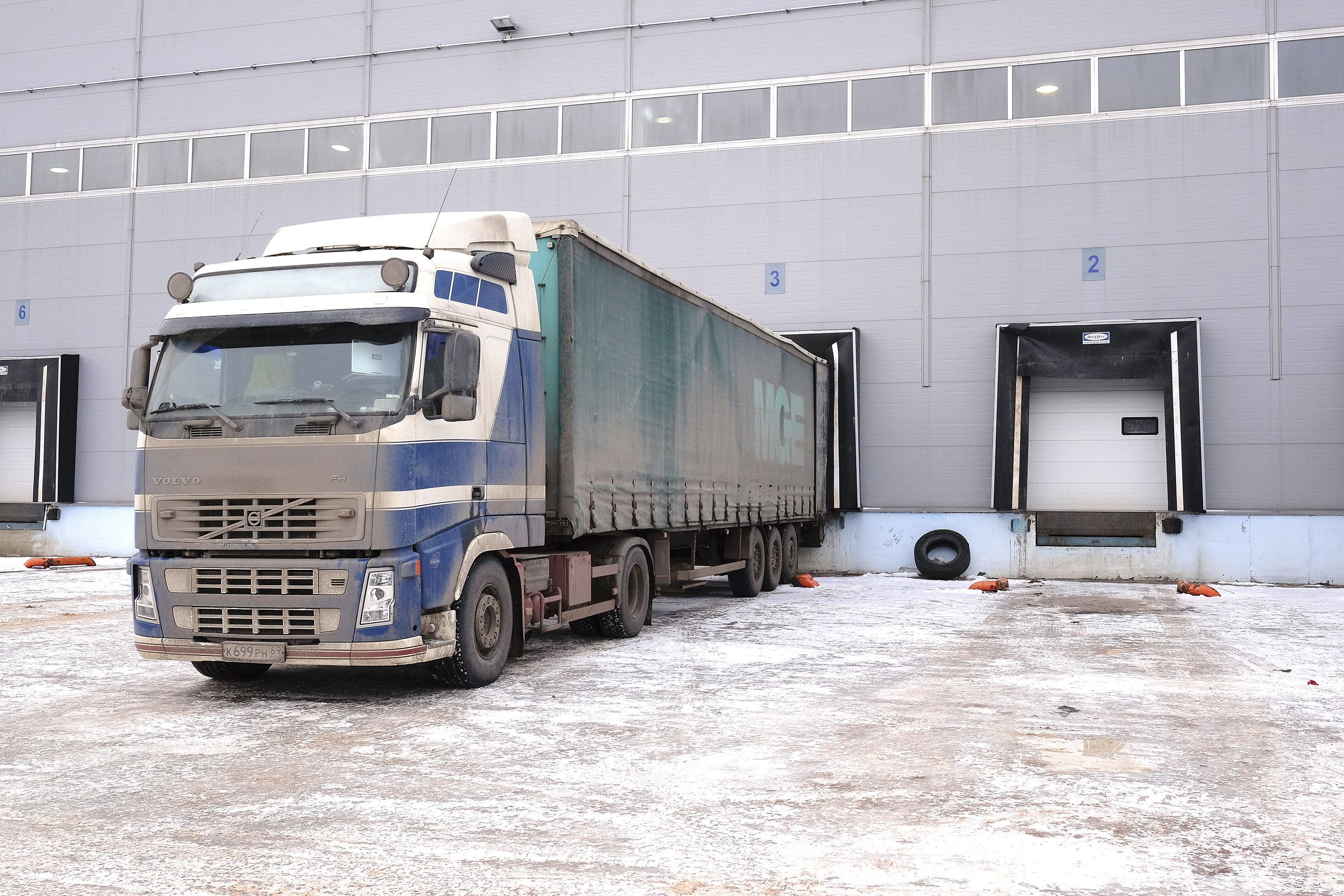We use cookies to make your experience better. To comply with the new e-Privacy directive, we need to ask for your consent to set the cookies. Learn more.
Wintertime Safety on Loading Docks
Even in the best of conditions, loading docks are the most dangerous place in the warehouse. The combination of heavy forklift traffic, potential truck drift, and a four-foot-plus drop-off add up to claim a full quarter of all workplace accidents that lead to injury.
When you throw in snow, sleet, and the inevitable holiday production bump, the risks mount heavily. Still, with a few minor alterations, you can keep your loading dock accident-free even when winter conditions hit hard.
Here are the three most common causes of loading dock accidents that are exacerbated by winter weather — and some easy ways to keep them from happening at your facility.
1. Slipping, tripping and otherwise falling.
These common accidents at the loading dock account for 34 percent of all worker’s compensation claims, reports industry journal EHS Today, making falls the second most common source of these costly claims. A slippery dock increases the risk of accidents exponentially, but it can be next to impossible to keep the dock dry in the snow and ice.
The solution is to keep snow from infiltrating bays in the first place. Dock seals and shelters like a Vestil Dock Shelter from Solus Group provide a barrier against falling snow. Trailers also tend to drop clumps of snow into bays, and a dock shelter will prevent that common frustration.
Keeping a few TPI Free-Standing Blowers aimed at the dock floor will also help to dry snowmelt as it accumulates. Finally, frequent sweeping and cleaning of dock floors can prevent moisture buildup, even in wet conditions. OSHA dictates this practice in standard 1910.22, which requires employers to keep floors clean and dry.
2. Falling over the edge of docks and dock ramps.
This is a particular concern for forklift operators, who frequently travel up and down steep grades at the dock. As snow builds up at dock edges, even the brightest safety tape can be obscured, diminishing awareness of the ledge.Try storing dock levelers in the raised position, creating an effective security barrier when they’re not actively in use. Install brightly colored bollards around the most dangerous ledges. These heavy duty steel posts stop most forklifts in their tracks, and they provide a powerful visual reminder for pedestrians on the dock.
3. Trailer/dock separation.
Hopefully you’ve never experienced this phenomenon, but as forklifts drive in and out of trailers, they sometimes push the trailer incrementally further away from the dock. If the right controls aren’t in place, eventually dock boards can slip, sending a forklift off the edge with potentially fatal results. During the summer, wheel chocks are usually an effective control, but when the ground is icy or snowed over, chocks themselves can slip.Reduce this possibility in winter by choosing recycled rubber chocks that resist wet conditions. This should go without saying, but truck brakes must be enabled before any loading and unloading begins. These restraints are mandated by OSHA regulation 1910.178(k)(1).
Wintertime at the loading dock presents an extra level of hazards that melt away with the spring thaw. With adequate safety equipment, though, it’s totally possible to get through the holiday crunch without an increased accident rate.
References:
Allan, Ronald. “Prevent Trailer/Dock Separation Accidents.” MHLNews. Penton, 23 Feb. 2012. Web. 1 Nov. 2015.
Brittingham, Michael. “Compete: Conquer the Dock’s Top Three Hazards.” MHLNews. Penton, 17 Oct. 2013. Web. 1 Nov. 2015.
Brittingham, Michael. “A Dry Dock is a Safe Dock.” EHSToday. Penton, 1 Oct. 2010. Web. 1 Nov. 2015.
